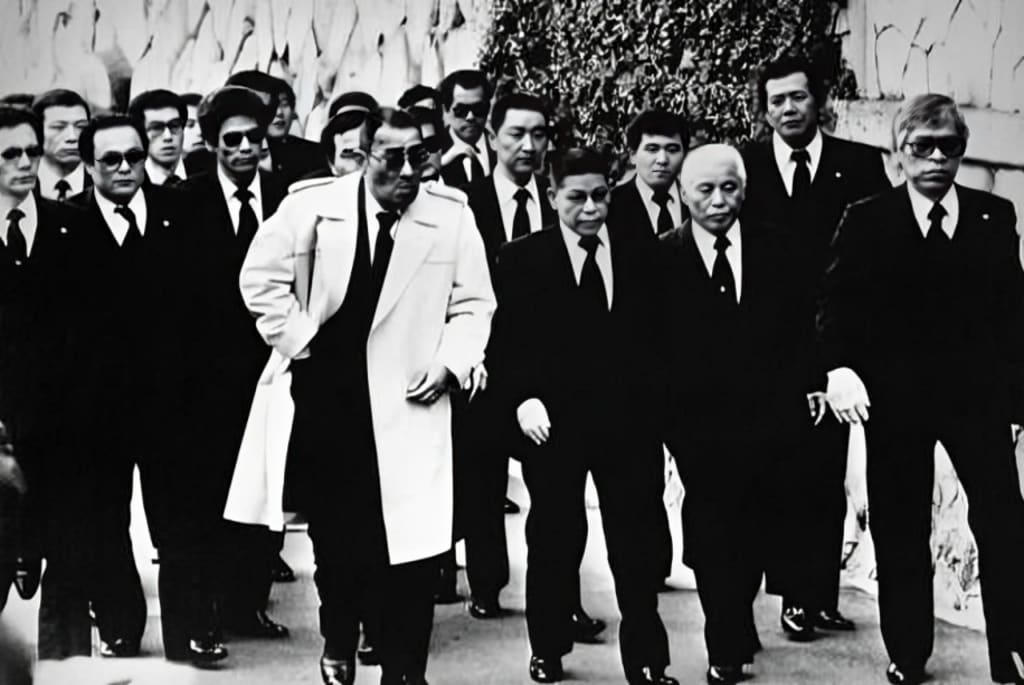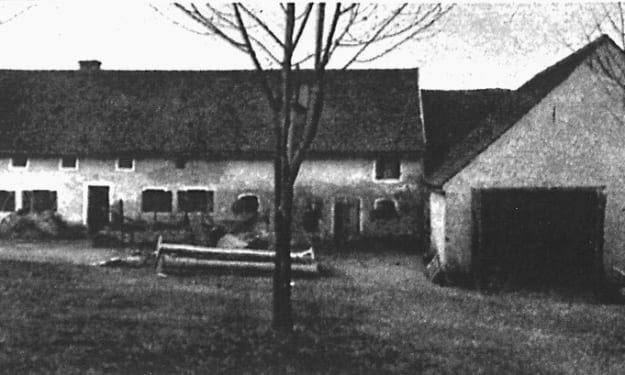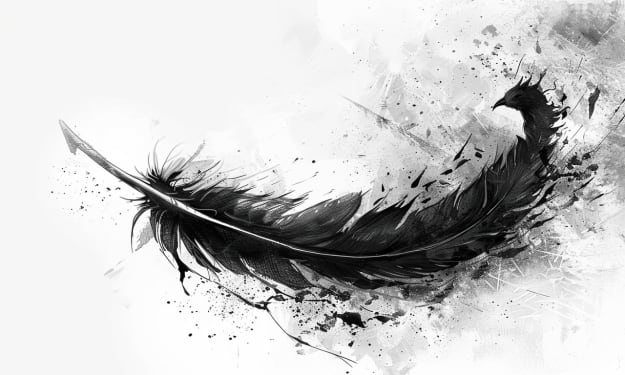Content warning
This story may contain sensitive material or discuss topics that some readers may find distressing. Reader discretion is advised. The views and opinions expressed in this story are those of the author and do not necessarily reflect the official policy or position of Vocal.
The Yakuza: Japan’s Notorious Crime Syndicate
Exploring the Origins, Operations, and Decline of Japan’s Most Infamous Criminal Syndicate

Introduction
The Yakuza, Japan’s notorious crime syndicate, has long been a subject of fascination and fear. Known for their strict code of honor, elaborate tattoos, and organized crime activities, the Yakuza are deeply embedded in Japanese society. While their influence has waned in recent years due to increased law enforcement efforts and societal changes, their legacy and impact remain significant. This article explores the origins, structure, operations, and the complex relationship between the Yakuza and Japanese society.
Origins and Historical Context
The roots of the Yakuza can be traced back to the Edo period (1603-1868). Two primary groups are considered the precursors to the modern Yakuza: the tekiya and the bakuto. Tekiya were peddlers who sold illicit or substandard goods, often forming tightly-knit groups to protect their territories and interests. Bakuto, on the other hand, were gamblers who operated illegal gambling dens. Both groups developed their own codes of conduct and organizational structures, laying the foundation for what would become the Yakuza.
As Japan modernized during the Meiji Restoration (1868-1912), these groups evolved and began to take on more organized crime activities, such as loan sharking, protection rackets, and smuggling. The term "Yakuza" itself comes from a losing hand in a Japanese card game, symbolizing their outsider status in society.
Structure and Code of Conduct
The Yakuza are highly structured, hierarchical organizations. At the top of this hierarchy is the oyabun (father figure), who wields considerable power and authority. Below the oyabun are various levels of subordinates, including wakagashira (second in command), shateigashira (third in command), and numerous lower-ranking members known as kobun (children). This hierarchical system is often compared to a family, with the oyabun acting as a patriarch.
Central to the Yakuza’s identity is their strict code of conduct, known as ninkyo, which emphasizes loyalty, honor, and discipline. Members are expected to show unwavering loyalty to their oyabun and the organization. Violations of the code can result in severe punishments, including yubitsume, the ritual amputation of a finger as a form of apology and atonement.
Tattoos, known as irezumi, are another defining characteristic of the Yakuza. These elaborate and often full-body tattoos are not only a mark of membership but also a demonstration of the pain tolerance and commitment of the individual. Each tattoo tells a story and is rich with symbolism, often depicting elements from Japanese mythology and culture.
Operations and Activities
The Yakuza are involved in a wide range of criminal activities, both in Japan and internationally. Their operations include drug trafficking, arms smuggling, extortion, money laundering, and human trafficking. They also engage in more legitimate businesses, such as construction, real estate, entertainment, and finance, often using these enterprises as fronts for their illicit activities.
One of the most lucrative ventures for the Yakuza has historically been the sex industry, including the operation of hostess clubs, massage parlors, and escort services. These establishments generate significant revenue and provide opportunities for further criminal activities, such as blackmail and exploitation.
Despite their criminal nature, the Yakuza have at times played a complex role in Japanese society. They have been known to provide relief efforts during natural disasters, such as the Kobe earthquake in 1995 and the Tohoku earthquake and tsunami in 2011. These actions, while altruistic on the surface, are often seen as attempts to garner public favor and legitimize their presence.
The Relationship with Society and Law Enforcement
The relationship between the Yakuza and Japanese society is multifaceted. On one hand, they are feared and reviled for their criminal activities and violence. On the other hand, they have been somewhat tolerated and even integrated into certain aspects of Japanese life. This ambivalence can be attributed to the Yakuza’s historical roots and their ability to maintain order in the underworld, effectively managing disputes and conflicts that might otherwise spill into the public sphere.
For many years, law enforcement’s approach to the Yakuza was characterized by a degree of pragmatism. The police often preferred to keep the Yakuza under surveillance rather than engage in open confrontation, believing that their presence helped control petty crime and maintain a certain level of stability. This tacit understanding allowed the Yakuza to operate relatively openly, with headquarters displaying their gang names and members often appearing in public with their tattoos visible.
However, this dynamic has shifted significantly in recent decades. The Japanese government has implemented stricter anti-organized crime laws and increased efforts to dismantle Yakuza operations. The 1992 Anti-Boryokudan Act marked a turning point, making it illegal for businesses to have dealings with Yakuza and allowing for more aggressive prosecution of their activities. Subsequent laws have further tightened the noose, targeting their finances and criminal enterprises.
The Decline of the Yakuza
The combination of legal crackdowns and societal changes has led to a noticeable decline in Yakuza membership and influence. The once-dominant syndicates, such as the Yamaguchi-gumi, Sumiyoshi-kai, and Inagawa-kai, have seen their numbers dwindle and their operations disrupted. Membership has dropped from an estimated 80,000 in the early 1990s to around 25,000 in recent years.
The decline of the Yakuza has also been influenced by changes in Japanese society. The economic stagnation that began in the 1990s reduced the opportunities for traditional Yakuza activities. Additionally, younger generations are less inclined to join organized crime, favoring more legitimate paths to success. The stigma associated with Yakuza membership and the increased risks of legal repercussions have made recruitment more difficult.
International Influence and Operations
While the Yakuza’s domestic influence has waned, they continue to have a presence on the international stage. They have established connections with other criminal organizations, such as the Chinese Triads, the Russian Mafia, and various Latin American drug cartels. These alliances facilitate the global reach of their operations, including drug and human trafficking, arms smuggling, and money laundering.
The Yakuza’s involvement in cybercrime has also grown, adapting to the digital age and exploiting new avenues for illicit profit. They engage in activities such as hacking, online fraud, and the distribution of illegal digital content. This evolution demonstrates their ability to adapt to changing times and technologies, even as their traditional operations face increased scrutiny.
Conclusion
The Yakuza, Japan’s notorious crime syndicate, have left an indelible mark on the country’s history and society. From their origins in the Edo period to their complex relationship with modern Japan, the Yakuza have been both a symbol of criminal enterprise and a reflection of the cultural and social dynamics that shape their existence.
While their influence has diminished due to legal crackdowns and societal changes, the legacy of the Yakuza serves as a reminder of the challenges and complexities in combating organized crime. Their story is one of resilience and adaptation, demonstrating how deeply entrenched criminal organizations can be in the fabric of society. As Japan continues to grapple with the remnants of Yakuza influence, the lessons learned from their history will undoubtedly shape future efforts to address and mitigate the impact of organized crime.
About the Creator
Kobra
"Enter the dark and twisted world of the unknown I lead you through the shadows on a journey into the depths of the unknown."
"Uncovering darkness"
Enjoyed the story? Support the Creator.
Subscribe for free to receive all their stories in your feed. You could also pledge your support or give them a one-off tip, letting them know you appreciate their work.






Comments
There are no comments for this story
Be the first to respond and start the conversation.